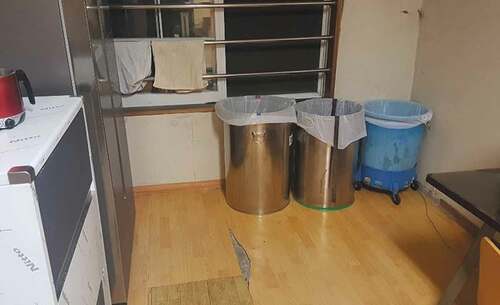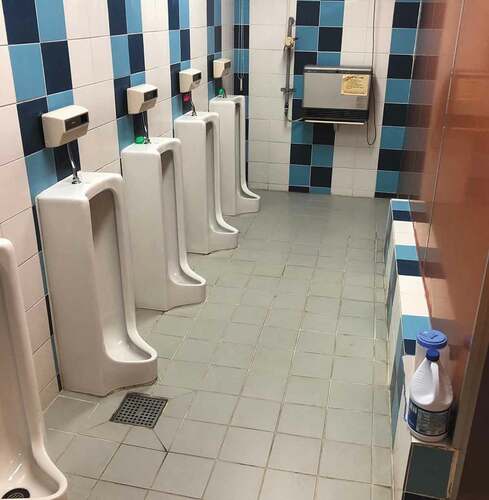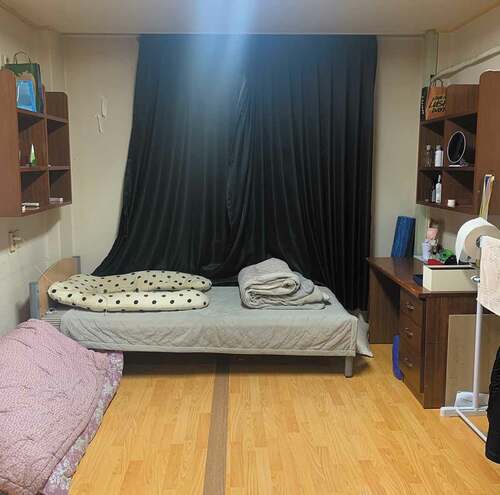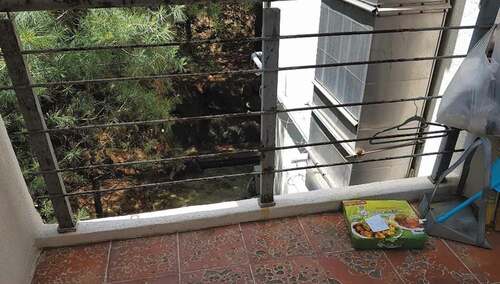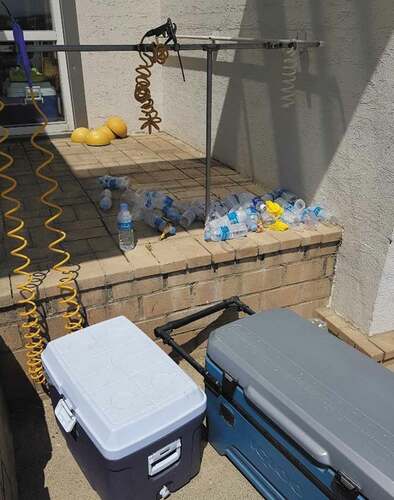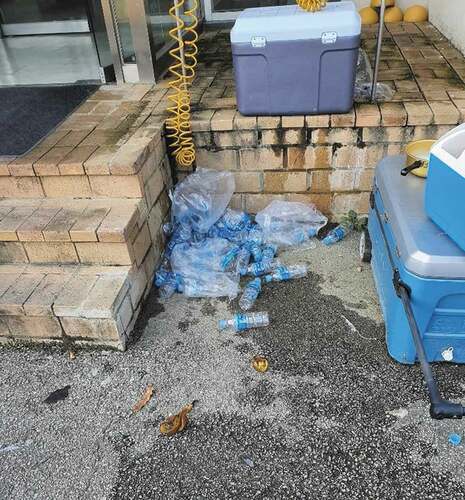ABSTRACT
Despite the growing body of research that has examined the complex relations in football organisations, one context that has received considerably less attention is the state-led elite sport systems in South Korea. In this article, we examine the interplay between self, affiliation and disaffection within the coaching regime at Suwon University FC (pseudonym), a prestigious school athletic team in South Korea. The precise research methods combined semi-structured interviews and auto-photography. The findings revealed how athletes struggled with the dialectical tension between identification with the coaching context, while also displaying resistant acts that distanced themselves from the organisational practices. Informed by Goffman’s concepts of primary and secondary adjustments, the discussion illuminates how athletes exercised their limited agency for self-preservation, despite aligning to the ‘totalising’ regime. Such work contributes to better understanding the ‘underlife’ of coaching practice and, more broadly, illustrates the functional complexity between disciplinary structures and agency within coaching practice.
Introduction
Elite football organisations have received considerable attention in the sport coaching and performance-based literature base. A particular body of research has engaged with the “darker” aspects of these organisations by uncovering the inherent micro-political agendas of coaching (e.g., Potrac & Jones, Citation2009; Potrac, Jones, Gilbourne, & Nelson, Citation2012). The aim of such work has been to examine the interpersonal negotiations, collaborations and conflicts of organisational life, which, in turn, have viewed coaches as navigating “skilled strategic action” (Ball, Citation1987, p.10). The subsequent claim has been to appreciate the day-to-day actions enacted by those caught up in the various personal and embedded networks (e.g., Booroff, Nelson, & Potrac, Citation2016).
Within this growing body of literature, several seminal studies have explored how coaches manipulate and manoeuvre their coaching “fronts” to achieve desired ends (e.g., Jones, Armour, & Potrac, Citation2004; Potrac, Jones, & Armour, Citation2002). In doing so, Goffman’s writings on presentation of self (1959) and stigma (1963) have proven to be insightful resources for better understanding the strategic actions of coaches’ management of personas, athlete buy-in, and avoiding discrediting features (e.g., Jones, Citation2006; Jones et al., Citation2004; Partington & Cushion, Citation2013; Potrac & Jones, Citation2009). Similarly, Goffman’s (Citation1961) writings in Asylums, specifically the concept of total institutions, have been used to deconstruct and critique the isolated, restrictive training regimes in elite sporting structures (e.g., Parker, Citation1996; Parker & Manley, Citation2017). For example, Parker (Citation1996) described the regulated and structured patterns of trainee professional footballers, while Parker and Manley (Citation2017) mapped out the disciplinary routines evident in professional football trainees that constituted the total institution.
For Goffman (Citation1961), then, the structures of institutions are powerful accomplishments that serve to protect those involved, whereby individuals’ identities dwell “in the pattern of social control that is exerted” (p. 168). From this perspective, asserting that an individual’s identity is not fixed, but continually created and reinvented (Scott, Citation2015), there is still work to be done to understand the agency of participants subject to such “totalising” practices, specifically notions of “resistance” and “adjustments” have received far less attention. In this article, we draw upon the lived experiences of Sport-Speciality Students (SSSs) and coaches within an elite South Korean football context to critically examine the interplay between self, affiliation, and disaffection with the espoused coaching regime.
Contributing to existing illustrations of how agents must negotiate contrasting ideological and cultural demands within sports coaching (e.g., Cushion & Jones, Citation2006, Citation2014), Goffman’s (Citation1961) writing in Asylums are used to attend to the athlete’s self-entanglements with the institutional expectations. In this way, Goffman’s theoretical insights combined with the contextual diversity offered in this article marks an attempt to critically engage with the constitutive rules and assumptions of day-to-day coaching “work”. The significance of the paper stretches beyond a particular analysis of institutional power workings, to unearth the subtle, but distinctive, activities of athletes that are collectively undertaken in coaching subculture. Indeed, the value of such analysis lies in appreciating the enactment of coaching at the “margins” of what is deemed typical coaching practice.
The next section of this article provides a critical insight to the elite sport-oriented context in South Korea, including the site of study, Suwon University Football (all names used are pseudonyms). The remainder of the article is committed to presenting the precise research design, data analysis procedures, and findings. Goffman’s (Citation1961) writings on the “underlife” of institutions is principally used to “make-sense-of” the findings, which concludes with a discussion of the contribution to existing research.
South Korea’s state-led sport: context of the study
The development of elite sport in South Korea was initiated in earnest by the military-based government in the 1960s (Park, Lim, & Bretherton, Citation2012). Under the authoritarian control of the military regime, improving the level of elite sport was viewed as a means of expressing a sense of national superiority against the backdrop of extreme tension in the Korean Peninsula – most notable following the Korea War (1950–1953) (Goh, Citation2017). The national tension drove the military government to value sports confrontation as a proxy for war in order to not only demonstrate the superiority of its social and political scheme, but also secure the legitimacy of the domestic regime (Park, Citation2011). Adopting the national slogan, “Physical Strength is National Power”, the government developed key elite sport-focused policies that aimed to intensify, foster and support young talented athletes (Park et al., Citation2012).
Among the state-led elite sport-oriented policies, the Sport-Speciality Student (hereafter SSS) system was designed to identify and affect those with “potential” (Kim, Dawson, & Cassidy, Citation2020). However, due to the economic poverty in the 1960s and 1970s affected by the Korean War, there were few private sport clubs, meaning the school-based sport clubs were tasked with constructing infrastructures for the elite sport system (Park, Citation2011). The consequence was any high-performing individual deemed eligible to be a SSS was registered at their sport governing bodies, as well as the local Education Offices, or in the case of university athletes, the Athletic Departments of their universities (Korea University Sport Federation, Citation2019; School Sports Promotion Act, Citation2017). This led to SSSs receiving opportunities to enter upper levels schools based solely on their athletic performance and achievements in national competitions, which included entry to highly-rated universities (Chung & Won, Citation2011).
Yet, despite such developments, the coaching practices manifest in such environments has received far less attention within the literature (Kim et al., Citation2020). In an effort to better appreciate the everyday practices with Korean sport institutions, the following study took place within Suwon University Football Club, a prestigious school athletic team in South Korea. The team consisted of a Head Coach (Lee), a full-time Assistant Coach (Kim), and 32 Sport-Speciality Students. The primary focus was athlete development within an intensive training programme, which included training four to five times a week, with one or more matches a week depending on the unfolding schedule.
Head coach, Lee, took responsibility for the players and coaching staff, which included the daily running of the team, schedule and team selection. Both Lee and Kim had been working full-time at Suwon University Football for more than five years. Their respective résumés included a range of both playing and coaching experiences. Lee, the head coach, had a professional playing career in Korea before holding an assistant role with the national team. Lee later transitioned into his head coach role with Suwon University Football. Meanwhile Kim had a distinguished career as a professional footballer, playing in the highest tier of South Korean football. Kim had coached a number of state-led school athletic teams in South Korea before joining Suwon University Football.
Meanwhile, the players’ ages varied from 20 to 23 years, with the hierarchy of the playing staff reflective of the duration of time spent at the club. All the players within Suwon FC had previously been identified as SSSs, meaning they had been exposed to rigorous training regimes since attending the compulsory education systems (i.e., primary, secondary and high school). This pathway into University football was considered “typical” for elite South Korean footballers.
Data gathering from afar: philosophical assumptions, participants, and research design
The research project was guided by an interpretivist paradigm, which aimed to understand the individuals of Suwon FC through interpreting their subjective perceptions, experiences and beliefs (Lincoln, Lynham, & Guba, Citation2011). Ontologically, this meant the project was underpinned by a relativist position that asserted social reality as fluid and multi-faceted (Sparkes & Smith, Citation2014). The subsequent epistemological position was constructionist, which assumed knowledge to be the product of shared social practices and interactions (Burr, Citation1995).
The host University’s Ethics Committee granted ethical approval for this project. Prior to the commencement of the research, an initial meeting was arranged with Lee (the head coach) to agree permission for the research. The subsequent data collection occurred over the course of a three-month period. During this period, the two coaches, Lee and Kim, and a further four players were purposively sampled as information-rich cases (Patton, Citation2002). The composition of the athletes included players at various points in their academic and sporting journey that would contribute to achieving an adequate understanding of the context.
Inspired by Lo Lacono, Symonds, and Brown (Citation2016) attempts to transcend geographical restrictions, the research design included a combination of in-depth semi-structured interviews and auto-photography. In terms of structure, one in-depth interview was conducted at the start of the data collection with all participants via an online platform. The four players were then asked to engage with auto-photography for 6–8 week (discussed further below). Follow-up interviews were then conducted with all the participants to (re)interrogate each participant’s experiences (i.e., previous descriptions of the context and photographs provided). All the interviews were recorded via Dictaphone, with the duration of the interviews ranging between 30 and 90 minutes. The total data collection culminated in over 20 hours of audio recording and 100 photographs.
The precise procedure used an interview guide to inform the in-depth semi-structured interview (Sparkes & Smith, Citation2014); in keeping with the aim of the study, the interview techniques throughout were exploratory. Following Tracy (Citation2013), the initial interview questions were deemed an opportunity to develop, probe and tease detail of the participants’ everyday practices (e.g., tell me about your day-to-day routine?), while the follow-up interviews investigated the participants’ selection of photographs (e.g., can you explain why you decided to take this photo? What does this mean to you?). The latter round of questioning was more akin to photo-elicitation described by Beilin (Citation2005), which involved the researcher offering interpretive remarks. In this way, the visual data was used to facilitate elaboration, clarification and exploring new ideas as means of generating a meaningful understanding of the participants’ practices (Phoenix & Rich, Citation2017).
Auto-photography
Auto-photography (also referred to as “photo-elicitation” or “photo-voice”) as a visual research method involved the participants taking ownership of the camera to generate photographs (Smith & Sparkes, Citation2017). In keeping with Phoenix and Rich (Citation2017), the significance of adopting the visual method lies in allowing participants to construct their own photographs of physical cultures in particular socio-historical moments. For, as Beilin (Citation2005) described, the photography allowed the research team to get beyond the “training ground” and appreciate the participants as “participatory, activist, grassroots of the community” (p. 58); that is, “how” and “where” the sites of interaction function in practice. However, auto-photography is not merely a “tool” to enrich and sharpen the data collection (D’Alonzo & Sharma, Citation2010), but encourages participants to represent their meaningful “spatial” experiences within the setting (Azzarito, Citation2010).
In the context of this study, then, the auto-photography combined with the interviews illustrated the inter-related connection between social and physical space (Wills, Dickinson, Meah, & Short, Citation2016). This is not to claim any form of objectivity (Edwards & Jones, Citation2016), but rather, the visual data was used to support the generation, analysis and representation of the data to produce a more authentic narrative of the participants’ perspectives (McLaughlin & Coleman-Fountain, Citation2019).
In terms of procedure and ethics, we followed Sparkes and Smith (Citation2014) assertion that confidential and anonymity of visual data cannot be assured and, given the geographic distance, issues of permission were potentially problematic. Consequently, the players were asked to provide photos that represented meaningful settings or key artefacts related to their day-to-day life, particularly “off-the-field”, but did not include revealing features of their, or anyone else’s, identity within the context. Any visual data deemed contentious by the research team (e.g., photos including faces or personal items) were removed immediately from the dataset. Additionally, before using any photo in the representation of data in this article, the final report has been sent to the participants to (re)confirm permissions and use of the visual data (Kaiser, Citation2009).
Speaking the language: reflexivity and translation
The term “reflexivity” has been increasingly recognised as crucial for qualitative researchers to scrutinise their knowledge claims (Hammersley & Atkinson, Citation2007; Probst, Citation2015). In this regard, the project was only “possible” due to the first author’s previous connections and experiences as a Sport-Speciality Student in Korea. Although we take warning against the potentially narcissistic, self-indulgent attempts (Lynch, Citation2000; Van Maanen, Citation1988), reflexivity as a feature of this project was crucial to understand the role of self in the creation of knowledge and, importantly, monitor the impact of biases and beliefs (Berger, Citation2015). For instance, the interviews were conducted in Korean, which required translation into English by the first author (i.e., Korean-English). For, as Kim (Citation2013) recognised, every language contains cultural nuanced terms, which, as an essential feature of our reflexive practices, required continual revisiting and challenging the hierarchical power relations embedded in linguistic practices. The purpose here was to question prior assumptions and knowledge in order to not only provide accurate transcription, but to generate inter-subjective agreement among the research team. By way of example, the athletes in this study frequently used the term “성향” [pronounced to “sung-hyang”], which translates loosely to “inclination”, “tendency”, or “disposition”. Thus, within the context of the study, when translated to, “I made an effort to fit into coach’s disposition”, the original meaning was not regarded as natural, but rather, expressed their efforts to align with the coaches’ tactics. Similarly, the English term “authoritarian” or “autocratic” was also evident throughout the dataset; the direct translation into Korean is “독재적인” [pronounced to “dok-jae-juck-in”]. In turn, rather than a more general label used to describe the overall sports settings, the term was used to describe the everyday features of the context akin to the term “control”.
Although such problems demanded vigilance on behalf of the researchers, we do claim that coherent meaning was unattainable. Instead, what was initiated between the authors was a crucial attempt to make explicit previous assumptions held regarding our interpretations, forming a crucial element of our sense-making – a point elaborated below in data analysis. The combination between participants, first author (fluent Korean & English speaking), and second author (English speaking only) aligned with what Finlay (Citation2002) described as “reflexivity as intersubjective reflection”; that is, we aimed to explore mutual meanings between the researchers and, in doing so, the emerging relations between the researcher and researched. This reflexive practice not only contributed to maintain “some” equivalence between sources (Kim, Citation2013), but included the continual refining of meaning and sense-making; often resulting in the first author revisiting the “raw” data to further refine the meanings generated. Such a process contributed to the “reflexive” feature of “reflexive thematic analysis” (Braun & Clarke, Citation2019) described in the next section.
Data analysis
Building upon the reflexive practice described above, reflexive thematic analysis (TA) was adopted in this study (Braun & Clarke, Citation2019). For Braun and Clarke (Citation2019), TA acknowledges the researcher’s subjective engagement with the data, iterative nature of analytic processes and is not reliant on a pre-existing theoretical framework. Such an approach offered theoretical flexibility, which enabled the data to be subject to analysis at both a semantic and latent level. Therefore, the data analytic work attempted to understand “social reality” through individuals’ meaning-making, whilst recognising reality as historical and cultural in context (Smith & Sparkes, Citation2017).
In terms of procedure, the reflexive TA followed Braun, Clarke and Weate’s (Citation2017) six phases. In the initial phases, familiarisation and coding of the coaches and athletes’ responses were achieved through data immersion, including the reading and re-reading of the interview transcript “analytically”, alongside the auto-photography data. It is here the authors employed the intersubjective “reflexive” attention described earlier to critically analyse the unfolding interpretation of the dataset. The second author acted as a “critical friend” who offered insights into the data analytic processes and possible changes that helped to reach the final categories (Smith, McGannon, & Williams, Citation2016). Through recursively reviewing the data, this process combined inductive analysis to search for shared meanings across the dataset, with an interpretive latent analysis that incorporated the theoretical considerations found in Goffman’s (Citation1961) writings. Rejecting that the procedure rigidly adheres to a linear order, this “abductive” process involved a reflexive engagement with the dataset, previous coding, and Goffman’s writings to generate the “sense-making” (Braun & Clarke, Citation2019). In turn, Goffman’s (Citation1961) conceptualisation of total institutions is outlined below.
Sensitising framework: Goffman’s (Citation1961) total institutions
Goffman’s (Citation1961) famous book Asylums introduced the concept “total institution” to describe the conditions of “a place of residence and work where a large number of like-situated individuals, cut off from the wider society for an appreciable period of time, together lead an enclosed, formally administered round of life” (p. 11). Some typical examples included mental hospitals, prisons, boarding schools, and army barracks. Total institutions, as outlined by Goffman (Citation1961), centralise the activities of the individuals within a single location in a highly regimented fashion. Under the coercive rule of an authority, Goffman (Citation1961) described the stripping down and building up of inmates’ identities; of which, involved the organised activities that plan to represent the “official” aims of the institution. While much of this work attends to the dehumanising practices that might leave selves mortified, Goffman (Citation1961) crucially acknowledged how individuals subject to the total institutions constructed an “underlife”; that is, how inmates, to varying degrees, adhered to, and distanced themselves from, the regimented practices of the institution. The significance of such practices, Goffman (Citation1961) writes, is that “to prescribe activity is to prescribe a world; to dodge a prescription can be to dodge an identity” (p. 189). Therefore, what Goffman (Citation1961) revealed were the ways individuals negotiated their affiliation with, and dissociation from, the institution as primary and secondary adjustments. The former related to how individuals became “normal” or “built-in” members, while the latter concerned individual’s actions that stood apart from the role and the self.
Although the context and the degree to which Goffman’s (Citation1961) writings have been used varied, relevant examples include Parker’s (Citation1996) description of professional football apprenticeships, Parker and Manley (Citation2017) comparison with a more recent study of English football academies, and wider sports settings include Norman’s (Citation2017) analysis of prisoner’s refashioning sport to resist (albeit limited) social controls. In the context of sports coaching, then, Goffman’s writings hold great potential to further uncover the everyday practices that shape both coaches and athletes’ sense of self. Further still, attending to the inner workings of coaching organisations can reveal the totalising and resistance features of coaching.
Results: findings and interpretation
The findings presented in the subsequent three sections highlight the respective playing, studying and living conditions experienced by coaches and athletes at Suwon University Football. Central to the discussion is how the athletes (and coaches) constructed and managed their identities within the context. The initial findings present the conditions of Suwon University FC, followed by the tensions, acts of resistance, and protective practices of athletes that marked the coaching “underlife”. The results and discussion aim to build upon Norman’s (Citation2017) recommendation to explore how individuals’ selves are managed when subject to social control by examining the latent “underlife” of the institution.
The confines of Suwon Football Club: total institutions
Suwon University FC was, according to the participants, representative of a “typical” Korean football context. That is, the authority of the coaches was manifest through a highly restrictive daily routine within the context. The athletes were obliged to reside all-year-round in their assigned athletic dormitory. Although the players were not strictly confined to the physical boundaries of the dormitories, Goffman (Citation1961) asserted that the three basic spheres of social life are broken down within a total institution; sleep, play and work. In this regard, the players explained that they must “sleep, eat and socialise” in the dormitory during the week (Monday to Saturday depending upon fixtures).
Akin to the rigid framework described in Kim et al. (Citation2020), the living conditions of the athletes were structured in a way that controlled and shaped the athletes’ everyday existence. There were 18 rooms located either side of a central aisle, which included two athletes for each respective room. This design accommodated the whole squad including the assistant coach, Kim. Even though the players’ participation was “voluntary”, Jang explained a “typical” day experienced as an athlete:
Jang: “We wake up [7:40 am], have meals [breakfast – 8 am, lunch – 12 pm and dinner – 6 pm] and train [3:30 pm] all set by coaches. We move as a group; we must wait for everyone to finish their meals. We are not allowed food after 10 pm and we sleep by 11pm. The only spare-time is 6:30pm to 10pm. But, if we win a league game, we might be allowed to go home on Friday evening until Sunday 10pm.”
In keeping with Goffman (Citation1961), these rules were actively adhered to through two avenues. Firstly, the “regimentation” was deemed an obligation for the athletes to adhere to the regulated activity outlined by Jang. Secondly, the players recognised that the authority of the coaches controlled this “arrangement”. The assistant coach also lived in the dormitory throughout the season, acting as a “custodian” of the expectations and rules the players must abide by in their everyday lives. Consequently, as Goffman (Citation1961, p.46) described, staying out of trouble was not merely an “on-the-field” task, but required the “persistent conscious effort” on behalf of the athletes. Kang explained:
Kang: “If we do not follow the rules in the dormitory, coaches shorten the spare-time; we are not allowed outside. Or, the wake-up time moves from 7:40 am to 7:10 am. They say we must take a walk before breakfast.”
These practices reflect the coercive and insular features described in previous studies of Korean sport settings (e.g., Lim, Citation2005). Indeed, even the degree of “free-time” was used as a coercive disciplinary tool; that is, the coaches followed the sentiment, “if you don’t behave ‘well’, you don’t get free-time” (Kim, assistant coach). This was rationalised by the coaches in terms of “the ideal aims or functions of the establishment” (Goffman, Citation1961, p.87). Therefore, it was a means of the authorities to deter the athletes from causing illicit acts and ultimately reduce the individuals to “obedience”. More specifically, despite describing the “regime” at the club as “authoritarian” [독재적인: pronounced to “dok-jae-juck-in”], Kim, the assistant coach, explained that discipline and punishment was a key source to “educate” the athletes view:
Kim: “I help them [athletes] construct the ‘right’ personalities. It should be a priority to educate them to become a better person as well as a better player. I emphasise that, ‘athletes must always live righteously’. The bad ways of drinking, smoking, a tattoo, and dating with girls, will influence them.”
Further examples of such disciplinary practices were manifest in the arbitrary supervision offered by the coaches. Such controlling practices on behalf of the coaches resonated with Goffman’s (Citation1961) notion of “looping”; that is, where an individual’s protective responses are used as the basis for further punishment. In this regard, irrespective of the authoritarian regimes the athletes described, the arrangement were tolerated based upon an assumption that it could lead to professional football. The athletes offered the following photographs () and descriptions as an illustration of the expectations and compliance within the institution:
Jang: “Coaches assign areas in the dormitory that must be cleaned daily. Cleaning starts at 10pm and needs to done by 10:40pm, before we sleep.”
Kang: “Coaches assert that rooms must be cleaned. They sometimes come and look into each room to check whether it is cleaned or not.”
Building upon previous studies of gaze and surveillance (e.g., Gearity & Mills, Citation2012; Manley, Palmer, & Roderick, Citation2012; Taylor, Potrac, Nelson, Jones, & Groom, Citation2017), the coaches’ unannounced arrival added to the socio-spatial impact on the daily lives of the athletes. The photos represent an insight to the breaking down of “private territory” as a feature of the permanent control and surveillance. For the head coach, Lee, these practices were explained by “helping the athletes’ development to become a better player and hopefully a professional player”. Consequently, the athletes’ perceptions of “living like an athlete” were bound within the monolithic regimes of the coaching practice, and wider state-led sport expectations (see Park et al., Citation2012).
The “underlife” of the training ground: athlete adjustments
A growing body of research has employed Goffman’s (Citation1961) writings on total institutions to explore whether, and how, individuals everyday lives are regulated by sporting structures (e.g., Hatteberg, Citation2018; Parker & Manley, Citation2017; Pike & Beames, Citation2007). Notably, Kim et al. (Citation2020) revealed how, despite the previous athletes’ intention to realise their agency and “reinvent” their coaching identity, such a sentiment was continual eroded within the authoritarian totalising structures. Although such analysis alluded to a one-dimensional identity of individuals, this is not to deny the subcultural practices of the athletes in Suwon University Football developed, known by Goffman (Citation1961) as the “underlife”.
The idea of an “underlife” for Goffman was not a mechanical by-product or defensive strategy on behalf of the individuals, but an “essential constituent of the self” (p. 316). In this sense, the self is considered as “a stance-taking entity” that interprets both their identification with, and opposition to, an organisation (Goffman, Citation1961, p.320). This was not a zero-sum decision, but a dialectical consideration between the participants’ identification with, and distancing from, the coercive practices. For instance, Jang described his association to the organisation as, “I’ve been committed to playing football since I was in elementary [primary] school. If I quit, I feel there is nothing that I can do in my life.” Similarly, Kang described a “lack of knowledge and experience” to opt for a different pathway. In this way, the athletes recognised the principal reason why they continued to be involved was to either to become a “professional” footballer, or exploit the rewards of being within the system (e.g., Kim et al., Citation2020). In this way, while the players were acutely aware of the coercive social structures, consistent with Goffman’s (Citation1961) description of individual “adjustments”, the players recognised the need to affiliate with the aims of the organisation more generally. Goffman (Citation1961) described these initial negotiations as “primary adjustments”, which are reflected in Kang’s explanation of a desired “performance”:
Kang: “The coaches favour those who listen to instructions. If I stick to the instructions, I can secure play-time. Continuing my playing career and becoming a professional footballer are my biggest ambition.”
For, as Branaman (Citation1997) described, an essential constituent of the self is “achieved by surrendering attachment to the self” (p.lxi). This “primary” adjustment (i.e., adhering to the coaches’ instruction; see also Corsby & Jones, Citation2019) meant Kang reflected the organisation’s aims as espoused by Lee, the head coach:
Lee: “I tend to speak more to the main group [those who are selected weekly]. It is inevitable. Their behaviours become the standard and players who are positioned ‘below’ must try to meet the standard.”
In this way, the “sticking to instruction” that Kang referred to was indicative of the adjustment to the “normal”, “programmed” features of the organisation (i.e., coaching practice). Therefore, Kang’s affiliation to Suwon University Football meant he accepted the coercive arrangements that accompanied his involvement; such as, the practices that Kim described to “create a better person as well as player” (assistant coach).
However, asserting that identification and distancing are Scott (Citation2010, Citation2011) developed from Goffman’s earlier writings to examine the agential acts individuals displayed while willingly participating in, and enduring, oppressive institutional structures. Thus, while the athletes’ compliance to participate within the structures was crucial to their selection, for some players the training schedule was an opportunity for the athletes to oppose the oppressive regime. In this way, the players also described the distancing practices that contributed to creating the “underlife” of the organisation. For instance, Kang stated, “I don’t respect coaches’ abilities; they are not experts,” while Jang described that, “I believe there should be lots of things that I can learn from coaches, but here, there is not.” In this way, returning to Goffman’s (Citation1961) assertion that selves are constructed from the subculture of the total institution (i.e., the “underlife”), the players’ dissatisfaction with the footballing experience (i.e., coaching practice) was not only reclaiming a sense of identity, but also questioning their tolerance of the total institution. Paradoxically, this was manifest in Nam’s efforts to “appear” to comply, while withdrawing “best efforts”. For instance, Nam explained, “When I don’t agree with the coaches, I have withdrawn my best efforts in order to show ‘I don’t agree’. They [coaches] punish us by running, but I don’t give it everything.” This paradox was further captured in Jang’s explanation of anger, “I sometimes become a ‘rough man’ in training. It is completely intentional; rough tackle [to his teammates], playing very violently, and spitting on the ground. It is a way to express my anger with the coaches.”
The players were afforded little agency over the daily practice, meaning such adjustments were subversive, subtle, and often contradictory. On the one hand, the athletes accepted the primary adjustments as a condition of their commitment to the organisation and an opportunity to further their career. Yet, on the other hand, the athletes’ subtle acts of self-preservation contradicted their initial acceptance of the coercive structures (i.e., complying yet withdrawing effort) by undermining their performance (i.e., to be selected for games). Indeed, Lee asserted that, “If a player loses concentration or control of his emotion [expressing one’s anger] on the field, I immediately scold him by punishing all the players.” According to Choi, such punishment attempted to “make us feel sorry for the others”. Thus, to gain a nuanced understanding of the “underlife” within the setting, the resistant acts were not refined to “on-the-field” adjustments alone. Rather, given the value placed on team selection, the athlete adjustments continued throughout the residency of the institution. Therefore, in recognition of the coaches’ control of “game-time”, the next section shifts from the training ground as a traditional location for coaching practice to the dormitory.
Reclaiming agency: athlete resistance and secondary adjustments
Despite the athletes ostensibly surrendered attachment to the self in order to identify with Suwon University FC (i.e., to secure playing time), the “underlife” described was further manifest away from the training ground. Here, the paradoxical affiliation with, and distancing from, the coaching practice was further illustrated within the dormitories of the players. These adjustments were not amendments in the self, for such faith to a self that can be so easily destroyed would be unproductive, but rather, they were the inner workings of the “underlife” in connection with others (Goffman, Citation1961). The surrendering of the agency found in the previous section was somewhat (re)claimed away from the training; a site that is often ignored within the analysis of coaching practice.
While the primary adjustments described “on” the pitch were under the direct watchful eyes of the coaches, the adjustments made “off-the-field” were well founded. Goffman (Citation1961) distinguished between primary adjustments and secondary adjustments, noting the latter as more radical acts of separation from institutional practices. Indeed, despite the hierarchy among the athletes, the dormitory was a site of solidarity between junior and senior players. For instance, Jang stated, “We always complain about the coaches away from training. We say, ‘coaches are too stubborn’. Younger players come to us [senior players] to moan about the coaches too.” Such hostility towards the coaches was described by the players as “collectively coping” with their dissatisfaction of the regime. These acts were not only collective discussions between players, but included overt individual acts of resistance. For example, Jang described a solitary act of resistance in the form of amending his diet, “I had chicken after 10 pm last night. Here is the proof of the box []; I had to chuck it afterwards.”
In this instance, food was an example of the small, illicit “secondary adjustment” made. When describing these illicit, talisman-like possessions, Goffman (Citation1961) asserted that such symbolic devices are “for separating themselves from the position they are supposed to be in” (p. 307). Further examples included the following quotes and photographs () presented as significant conscious features of the payers’ everyday management of their organisational life:
Nam: “I did some laundry and put the air-conditioning on too. We aren’t supposed to, but it was after 11 pm. My life becomes too tough if I abide by all rules in the dormitory.”
For Kang, the illustrations above epitomised “not doing the job as it is supposed to be done”. Such data presents a complex interrelationship between coaching practice, coaches, athletes, and their subsequent adjustment to dormitory life. Although such data hinged primarily on the athletes’ experiences, the subtle and subversive acts of resistance constituted the “underlife” of the context (Goffman, Citation1961).
Discussion and concluding thoughts
This article has provided an insight to the lived experiences of State-led Sport Students and coaches within a South Korean elite football context. The aim has been to critically examine the interplay between the self, affiliation and disaffiliation with the coaching regime, paying specific attention to the “underlife” of coaching practice. Drawing upon Goffman’s (Citation1961) writing in Asylums, the findings revealed the dialectical connection between athletes’ identification with the institution (i.e., Suwon University FC) and their distancing from the controlling practices manifest within the institution (i.e., coaching regime). While the affiliation of the individuals’ selves aligned with the regime, the analysis has illustrated how the adjustments of athletes, which at times were paradoxical, endeavoured to construct a sense of the self beyond the espoused regime. Drawing upon Goffman’s (Citation1961) description, the findings illustrated the willingness for athletes to accept primary adjustments in the form of coaching practices and education (i.e., to become a “pro”; career progression), while engaging in secondary adjustments in the athletes’ dormitory lives. Although such adjustments were limited in the agency exercised, the resistant acts shed light on the “underlife” of the coaching; that is, how those under the control and surveillance collectively (and subtly) adhered to, and revolted against, constructing the totalising practices of the institution.
Examining the everyday “underlife” of the training culture in this way, we assert that a deepened understanding of the social lives of athletes “beyond the pitch” must be interwoven with the analysis of coaching practice. The danger, then, lies in omitting the everyday (resistant) acts of the athletes leads to further reifying the assumption that coaching is mechanical and functional. Rather, accepting that coaches’ autonomy is formed within, and inseparable from, interaction and relations, the wider value of this article lies in examining the unfolding complexities inherent within oppressive, disciplinary institutional structures of coaching. Investigating the function and impact of such structures within coaching builds upon the growing body of research that has paid significant attention to the systems of disciplinary practice (e.g., Gearity & Mills, Citation2012; Manley et al., Citation2012; Taylor et al., Citation2017). Consequently, the analysis further contributes to previous broad characterisations of total institutions (e.g., Hatteberg, Citation2018;; Kim et al., Citation2020; Parker & Manley, Citation2017) by illustrating how athletes’ selves are not merely adjusted, but connected to the subculture of coaching practice (i.e., the “underlife”). In addition, the findings illustrated how the coaches’ protective responses were used as the basis for further punishment (i.e., looping), which further emphasised the authoritarian regime constructed between coach, athletes, and context.
Although we recognise Goffman’s conceptualisation of total institutions resonates with Foucault’s writings on power, which might offer ways to decipher what can be said, what is possible, and what is meaningful (e.g., Blackett, Evans, & Piggott, Citation2019; Taylor et al., Citation2017), such work leaves how, in everyday life, individuals negotiate the possibilities and impossibilities of their selves. Rather, Hacking (Citation2004, p.299) writes, we must turn to Goffman for a clearer understanding of how people are “made up day-by-day” within an institution. Nevertheless, we follow Denison, Mills, and Konoval (Citation2015) lead in claiming such work encourages coaches (and educators) to be continuously reflexive of their acts that reproduce practices. Similarly, appreciating how individual’s dialectical identification with, and distancing from, the organisation, illustrates the functional complexity between disciplinary structures and agency within coaching practice. In doing so, amidst growing concerns about the one-dimensional identities created in elite sports settings (e.g., Mitchell et al., Citation2014), such reflexive awareness provides insight to the on-going entanglements that coaches, athletes and stakeholders must negotiate within elite sporting environments
Finally, despite the ostensible merits of using Goffman’s (Citation1961) writings to decipher the interplay between self and coaching regime, we accept that adopting a single-theoretical perspective is not without its limitations. Here, the sole use Goffman’s work, it can be argued, has inevitably “narrowed” the scope and shape of the project. Yet, in keeping with previous critical studies of coaching using a Goffmanian lens (e.g., Consterdine, Newton, & Piggin, Citation2013; Jones, Citation2006; Roderick & Allen Collinson, Citation2020), we assert that Goffman’s insights certainly enabled an in-depth analysis of social practices within the South Korean football context; one that allowed us to better understand the everyday “looping” effect between coach, athlete and context. Consequently, we follow Smith. (Citation2018) in claiming naturalistic generalisability for the study; that is, by using Goffman’s writings, we have aimed to provide rich detail of the participants’ lives that resonates with, and promotes reflection among, readers. Indeed, while this project is “around” the South Korean elite football context, rather than “in”, we believe the creative and flexible approaches of the data collection and representation (i.e., the combination of in-depth interviews and auto-photography) offers a meaningful contribution to everyday background arenas of sport coaching.
Disclosure statement
No potential conflict of interest was reported by the authors.
References
- Azzarito, L. (2010). Ways of seeing the body in kinesiology: A case for visual methods. Quest, 62(2), 155–171.
- Ball, S. J. (1987). The micro-politics of the school: Towards a theory of school organization. London: Methuen.
- Beilin, R. (2005). Photo-elicitation and the agricultural landscape: ‘seeing’ and telling’ about framing, community and place. Visual Studies, 20(1), 56–68.
- Berger, R. (2015). Now I see it, now I don’t: Researcher’s position and reflexivity in qualitative research. Qualitative Research, 15(2), 219–234.
- Blackett, A. D., Evans, A. B., & Piggott, D. (2019). “They have to toe the line”: A Foucauldian analysis of the socialisation of former elite athletes into academy coaching roles. Sports Coaching Review, 8(1), 83–102.
- Booroff, M., Nelson, L., & Potrac, P. (2016). A coach’s political use of video-based feedback: A case study in elite-level academy soccer. Journal of Sports Science, 34(2), 116–124.
- Branaman, A. (1997). Goffman’s social theory. In C. Lemert & A. Branaman (Eds.), The Goffman Reader (pp. xliii–lxxxii). Oxford: Blackwell Publishing Limited.
- Braun, V., & Clarke, V. (2019). Reflecting on reflexive thematic analysis. Qualitative Research in Sport, Exercise and Health, 11(4), 589–597.
- Braun, V., Clarke, V., & Weate, P. (2017). Using thematic analysis in sport and exercise research. In B. Smith. & A. C. Sparkes (Eds.), Routledge handbook of qualitative research in sport and exercise (pp. 191–205). London: Routledge.
- Burr, V. (1995). An introduction to social constructionism. London: Routledge.
- Chung, J. Y., & Won, D. Y. (2011). The authoritarian policy in South Korean sport: A critical perspective. European Journal of Social Science, 20(1), 146–157.
- Consterdine, A., Newton, J., & Piggin, S. (2013). ‘Time to take the stage’: A contextual study of a high performance coach. Sports Coaching Review, 2(2), 124–135.
- Corsby, C. L. T., & Jones, R. L. (2019). Observation, evaluation and coaching: The local orderliness of ‘seeing’ performance. Sport, Education and Society, 23(3), 348–358.
- Cushion, C. J., & Jones, R. L. (2006). Power, discourse, and symbolic violence in professional youth soccer: The case of Albion football club. Sociology of Sport Journal, 23(2), 142–161.
- Cushion, C. J., & Jones, R. L. (2014). A Bourdieusian analysis of cultural reproduction: Socialisation and the ‘hidden curriculum’ in professional football. Sport, Education and Society, 19(3), 276–298.
- D’Alonzo, K. T., & Sharma, M. (2010). The influence of marianismo beliefs on physical activity of mid-life immigrant Latinas: A photovoice study. Qualitative Research in Sport and Exercise, 2(2), 229–249.
- Denison, J., Mills, J. P., & Konoval, T. (2015). Sports’ disciplinary legacy and the challenge of ‘coaching differently’. Sport, Education and Society, 22(6), 772–783.
- Edwards, C., & Jones, R. L. (2016). The legitimacy of ethnographic film: Literary thoughts and practical realities. In G. Molnar. & L. G. Purdy (Eds.), Ethnographies in sport and exercise research (pp. 155–164). London: Routledge.
- Finlay, L. (2002). Negotiating the swamp: The opportunity and challenge of reflexivity in research practice. Qualitative Research, 2(2), 209–230.
- Gearity, B. T., & Mills, J. P. (2012). Discipline and punish in the weight room. Sports Coaching Review, 1(2), 124–134.
- Goffman, E. (1961). Asylums: Essays on the social situations of mental patients and other inmates. New York: Doubleday.
- Goh, K. (2017). The Korean society in the 1970s and sports. Sport Science, 138, 4–11.
- Hacking, I. (2004). Between Michel Foucault and Erving Goffman: Between discourse in the abstract and face-to-face interaction. Economy and Society, 33(3), 277–302.
- Hammersley, M., & Atkinson, P. (2007). Ethnography: Principles in practice (2nd Ed ed.). London/New York: Routledge.
- Hatteberg, S. J. (2018). Under surveillance: Collegiate athletics as a total institution. Sociology of Sport Journal, 35(2), 149–158.
- Jones, R. L. (2006). Dilemmas, maintaining ‘face’ and paranoia: An average coaching life. Qualitative Inquiry, 12(2), 1012–1021.
- Jones, R. L., Armour, K. M., & Potrac, P. (2004). Sports coaching cultures: From practice to theory. London: Routledge.
- Kaiser, K. (2009). Protecting respondent confidentiality in qualitative research. Qualitative Health Research, 19(11), 1632–1641.
- Kim, K. Y. (2013). Translation with abusive fidelity: Methodological issues in translating media texts about Korean LPGA players. Sociology of Sport Journal, 30(3), 340–358.
- Kim, Y. J., Dawson, M. C., & Cassidy, T. (2020). Crafting a one-dimensional identity: Exploring the nexus between totalisation and reinvention in an elite sports environment. Sport, Education and Society, 25(1), 84–97.
- Korea University Sport Federation. (2019). Managerial regulation for collegiate sports. Retrieved July 5 http://kusf.or.kr/news/pds_view.html?page=1&seq=559&board=etc
- Lim, S. W. (2005). The beating culture as a means of socialisation in the athletic groups. Korean Journal of Sociology of Sport, 18, 327–339.
- Lincoln, Y. S., Lynham, S. A., & Guba, E. G. (2011). Paradigmatic controversies, contradictions, and emerging confluences, revisited. In N. K. Denzin. & Y. S. Lincoln (Eds.), The SAGE handbook of qualitative research (pp. 97–129). Thousand Oaks, California: SAGE Publications.
- Lo Lacono, V., Symonds, P., & Brown, D. H. K. (2016). Skype as a tool for qualitative research interviews. Sociological Research Online, 21(1), 103–117.
- Lynch, M. (2000). Against reflexivity as an academic virtue and source of privileged knowledge. Theory, Culture & Society, 17(3), 26–54.
- Manley, A., Palmer, C., & Roderick, M. (2012). Disciplinary power, the oligopticon and rhizomatic surveillance in elite sports academies. Surveillance & Society, 10(3/4), 303–319.
- McLaughlin, J., & Coleman-Fountain, E. (2019). Visual methods and voice in disabled childhoods research: Troubling narrative authenticity. Qualitative Research, 19(4), 363–381.
- Mitchell, T. O., Nesti, M., Richardson, D., Midgley, A. W., Eubank, M., & Littlewood, M. (2014). Exploring athletic identity in elite-level english youth football: A cross-sectional approach. Journal of Sports Sciences, 32(13), 1294–1299.
- Norman, M. (2017). Sport in the underlife of a total institution: Social control and resistance in Canadian prisons. International Review for the Sociology of Sport, 52(5), 598–614.
- Park, J.-W. (2011). Elite sport development in South Korea: An analysis of policy change in the sports of athletes, archery and baseball. Thesis (PhD). Loughborough University.
- Park, J.-W., Lim, S.-Y., & Bretherton, P. (2012). Exploring the truth: A critical approach to the success of Korean elite sport. Journal of Sport and Social Issues, 36(3), 245–267.
- Parker, A. (1996). Chasing the “big-time”: Football apprenticeship in the 1990s. Thesis (PhD). University of Warwick, Coventry.
- Parker, A. (2001). Soccer, servitude and sub-cultural identity: Football traineeship and masculine construction. Soccer & Society, 2(1), 59–80.
- Parker, A., & Manley, A. (2017). Goffman, identity and organizational control: Elite sports academies and social theory. Sociology of Sport Journal, 34(3), 211–222.
- Partington, M., & Cushion, C. (2013). An investigation of the practice activities and coaching behaviors of professional top-level youth soccer coaches. Scandinavian Journal of Medicine & Science in Sports, 23(3), 374–382.
- Patton, M. Q. (2002). Qualitative research & evaluation methods (3rd Ed ed.). London: Sage.
- Phoenix, C., & Rich, E. (2017). Visual research methods. In B. Smith & A. C. Sparkes (Eds.), Routledge handbook of qualitative research in sport and exercise (pp. 139–151). London: Routledge.
- Pike, E. C., & Beames, S. K. (2007). A critical interactionist analysis of ‘Youth Development’ expectations. Leisure Studies, 26(2), 147–159.
- Potrac, P., & Jones, R. L. (2009). Power, conflict and cooperation: Toward a micropolitics of coaching. Quest, 61, 223–236.
- Potrac, P., Jones, R. L., & Armour, K. (2002). It’s all about getting respect: The coaching behaviors of an expert English soccer coach. Sport, Education and Society, 7(2), 183–202.
- Potrac, P., Jones, R. L., Gilbourne, D., & Nelson, L. (2012). Handshakes, BBQs, and bullets: Self-interest, shame and regret in football coaching. Sports Coaching Review, 1(2), 79–92.
- Probst, B. (2015). The eye regards itself: Benefits and challenges of reflexivity in qualitative social work research. Social Work Research, 39(1), 37–48.
- Roderick, M. J., & Allen Collinson, J. (2020). ‘I just want to be left alone’: Novel sociological insights into dramaturgical demands on professional athletes. Sociology of Sport Journal, 37(2), 108–116.
- School Sports Promotion Act. (2017). Retrieved from http://www.law.go.kr/lsInfoP.do?lsiSeq=193380&efYd=20171019#0000
- Scott, S. (2010). Revisiting the total institution: Performative regulation in the reinventive institution. Sociology, 44(2), 213–231.
- Scott, S. (2011). Total institutions and reinvented identities. London: Palgrave Macmillan.
- Scott, S. (2015). Negotiating identity: Symbolic interactionist approaches to social identity. Cambridge: Polity Press.
- Smith, B., McGannon, K. R., & Williams, T. L. (2016). Ethnographic creative nonfiction: Exploring the whats, whys and hows. In G. Molnar & L. Purdy (Eds.), Ethnographies in sport and exercise research (pp. 59–73). Abingdon, Oxon: Routledge.
- Smith, B., & Sparkes, A. C. (2017). Routledge handbook of qualitative research in sport and exercise. London: Routledge.
- Smith., B. (2018). Generalizability in qualitative research: Misunderstandings, opportunities and recommendations for the sport and exercise sciences. Qualitative Research in Sport, Exercise and Health, 10(1), 137–149.
- Sparkes, A. C., & Smith, B. (2014). Qualitative research methods in sport, exercise and health: From process to product. London: Routledge.
- Taylor, W. G., Potrac, P., Nelson, L. J., Jones, R. L., & Groom, R. (2017). An elite hockey player’s experiences of video-based coaching: A poststructuralist reading. International Review for the Sociology of Sport, 52(1), 112–125.
- Tracy, S. J. (2013). Qualitative research methods: Collecting evidence, crafting analysis, communicating impact. Oxford: Wiley-Blackwell.
- Van Maanen, J. (1988). Tales of the field: On writing ethnography. Chicago: University of Chicago Press.
- Wills, W. J., Dickinson, A. M., Meah, A., & Short, F. (2016). Reflections on the use of visual methods in a qualitative study of domestic kitchen practices. A Journal of the British Sociological Association, 50(3), 470–485.

